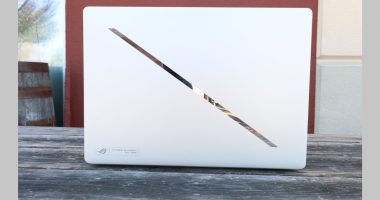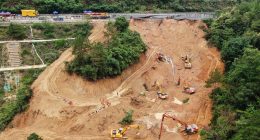Photojournalists work on the front lines of any unfolding story, but during the Covid-19 pandemic, the front lines are on lockdown.
Since the first cases appeared in Wuhan, China in December, the coronavirus has quickly become “the defining global health crisis of our time,” according to the World Health Organization. More than 254,000 people in at least 154 countries have fallen ill and been quarantined in highly restricted government facilities, hospitals, and even cruise ships. Some 10,000 have died. As governments fight to squash the bug, national borders have closed, schools and businesses have shuttered, and people everywhere are hunkering down.
It poses a special challenge to photographers, who must document a crisis defined by social distancing—the face mask being its most accessible symbol. “It’s kind of like the drought four or five years ago: Everyone’s go-to picture was of some dry dirt that was cracked and looked crazy,” says Getty photographer Justin Sullivan. “There aren’t many ways to illustrate this—it’s not like there are coronavirus balls bouncing around.”
And yet photojournalists around the world are pushing beyond the mask to document life amid Covid-19—while trying to stay safe and sane themselves.
China
Beijing-based photographer Kevin Frayer can’t remember a time that his life was so complicated or difficult, “and that speaks to the intensity of the story,” he says.
After ordering an aggressive lockdown on Wuhan on January 23, the Chinese government moved to protect the capital, restricting residents’ movement and requiring a 14-day quarantine for anyone entering from outside. Since then, Frayer and his partner—also a journalist—have experienced more than 30 days of separation. And since schools are closed, he spends hours each day homeschooling his 6-year-old son. “His health and welfare obviously come first,” he says. “If we can’t find the compassion and empathy for our own family, then how can we expect to have it in our work?”
He takes pictures when he can, though restrictions make it tough. Hospitals are off limits, apartments and offices difficult to enter, and people afraid to mix with outsiders—all which minimize what he can see. Though Frayer wears a particle-filtering mask and gloves, and stands further away from his subjects than usual, people still sometimes gesture to him to back up. “It’s a struggle for me, since people are what drives my interest in taking pictures,” he says. “I don’t want to force myself on them or make them uncomfortable.”
Despite these obstacles, Frayer has worked to create a moving record of life in Beijing as people deal with the virus, from residents just trying to get through the crisis to the brave volunteers with the humanitarian organization Blue Sky Rescue, who are donning protective suits and disinfection equipment to tackle it head on.








